
ABOUT SCOTT FRANKLAND
Scott Frankland is Head of Content at Sengerio. His spirit of inquiry leads him to the world of transportation and mobility to connect with the industry’s leading experts and shine a light on the hot topics.

The idea of free public transit has long taunted the minds of transport experts across the globe. Some might call it utopian dreaming, but having free public transit could seemingly resolve (or have a pretty good shot at) many of today’s transportation problems.
In recent years, policymakers have recognized the urgent need to tackle pressing environmental and traffic congestion challenges that stem from heavy reliance on private vehicles.

But by slashing transport fares, transit providers aim to level the playing field, making public transportation an attractive and viable alternative for a broader demographic.
This bold strategy brings to the forefront complex considerations that demand careful analysis:
And most importantly,
To answer these questions, Sengerio caught up with Roni Hattrup, Senior Program Manager at Gray-Bowen-Scott. Gray-Bown-Scott oversees the Mountain View Transportation Management Association (MTMA) and is responsible for managing all aspects of the organization, including the MVgo service that offers a fare-free shuttle service to its members.
This article shines a light on the MTMA’s model to provide sustainable and collaborative transportation services to reduce traffic by incentivizing the shift from private vehicles to public transit while attracting businesses and property owners to the city.
Rewinding the clocks to 10-15 years ago, Mountain View, a city located in Santa Clara County (California), was dealing with two issues regarding transportation.
Firstly, as with many of the cities in the area, traffic was choking up the roads. The convenience of a private vehicle was still the number one choice for the local residents making their daily commute.
Secondly, the city, renowned for its importance in the growth and development of Silicon Valley, is home to some of the global tech giants; even today, these companies continue to contribute to the local economy. But with big companies comes a large workforce, creating a spike in the population and commuters on the roads.
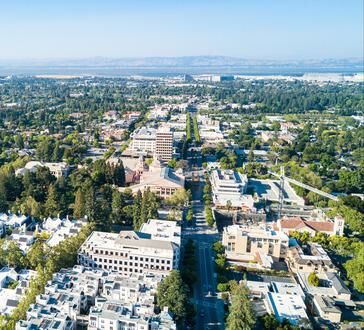
Despite many of the big businesses offering their own, private commuter shuttle programs, this only added to the initial problem of having too many people on the road. With the unlikelihood of ever reaching the workplace without encountering a bottleneck or the occasional gridlock, the city’s daily rush hour was certainly not a place commuters looked forward to facing every morning.
It wasn’t until the Samsung Research Facility was being developed by TMG Partners that the lead developer realized that while going through all the TDM requirements with the City of Mountain View’s Economic Development Department understood it would make more sense to form a Transportation Management Association (TMA). As Roni Hattrup highlighted
“There was a lot of redevelopment happening at the time, a lot of densifying with the employment establishments. Realizing that a TMA would be a great benefit to provide collaborative transportation services as opposed to each individual developer or business going alone.”
TMAs are typically non-profit membership organizations made up of employers, developers, and property managers working together to address transportation, air quality, and commuter issues in a defined geographic area. TMA services provide a framework for TDM Programs and services, such as helping commuters switch to greener mobility solutions, minimizing vehicle emissions, and improving access to transportation options.
Following initial stakeholder outreach, especially with the bigger companies that initially showed interest in the idea of a TMA and had plans to expand their employee base in the coming years, four companies initially agreed that it was the ideal solution to offer collaborative transportation.
As a result, in 2013, the Mountain View Transportation Management Association (MTMA) was born.
Today, the MTMA has 15 members and manages MVgo, a free service that is funded by the contributions of its member companies, to connect commuters with the Mountain View Transit Center (Caltrain and VTA Light Rail) and various locations around the city during weekday commuting hours.
Since 2019, the MTMA has expanded its membership by taking on multi-residential complexes to serve the residential population of the new development happening in various locations to help increase the residential location.
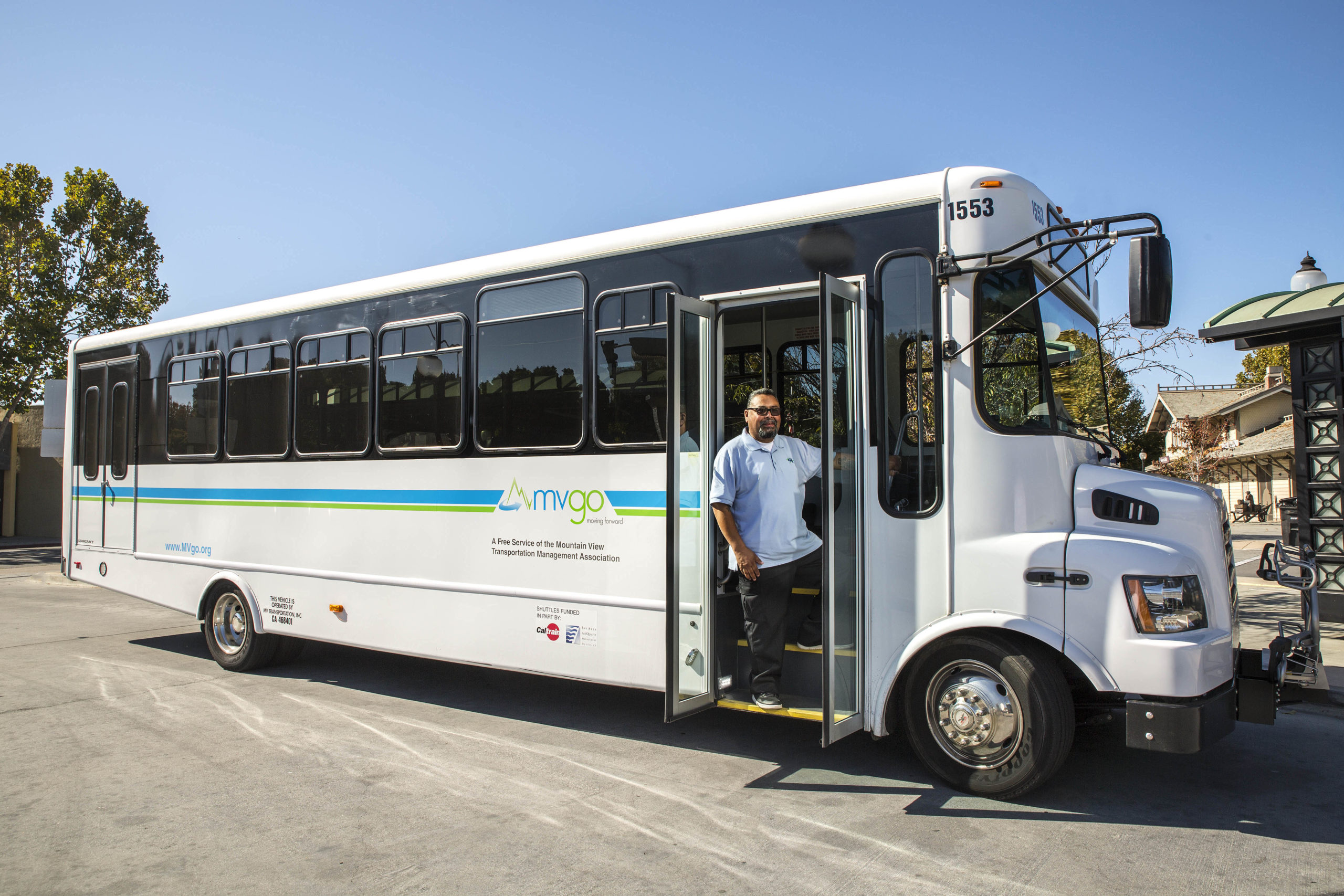
When asked how the property owners responded to the idea of contributing toward a shared transport service, Roni explained how the residential input has helped shape the evolution of the MTMA.
“The program developers were always faced with some challenges and it's very expensive to develop such a program, then you layer that with these expensive TMA fees and requirements, so the residents that come in are definitely surprised that they are required to participate in the program.
The question arises as to whether the residents actually benefit from free transit, rather than the commuters coming in using the first and last-mile solutions. The evolution of these transport services has met the residents’ needs as opposed to the commuters who are solely moving to and from the transit hubs via first and last-mile modalities.”
The MTMA welcomes new businesses and residential complexes to its member community. The association adapts the MVgo services accordingly to align with the new member’s properties/locations and even considers its future projects. As Roni highlights
“While we’re adapting our services we’re already thinking “who else is going to be coming here?” so we know it makes sense to reroute services to meet the demands of the new members. Depending on the demand for new riders, we determine whether a new route is needed or if we can divert an already-established route to meet this demand.
We undergo a transit planning study to analyze this, but usually, we have already predicted this way in advance. Most of the time, it really is a question of a missing stop on a route.”
Even with fare-free services and strong membership engagement, MVgo is currently operating at approximately 30% of pre-pandemic ridership levels. Why is it so low?
MVgo’s ridership usually reflects that of Caltrain, the commuter rail line serving the San Francisco Peninsula and Santa Clara Valley. For this reason, there could be a combination of factors that could explain the particularly low ridership:
1) Teleworking
Many employees have remained teleworking and/or continue to work more frequently from home than in the office.
2) Traffic simply isn’t as bad as it was pre-covid
Since the pandemic, there have been numerous modifications to local infrastructure (new express lanes for public transit etc.) and car-pooling services.
3) Lack of time efficiency
The third point draws attention to the fact that the cost of transport might not be the primary motivator for commuters choosing how to travel. In fact, if it’s quicker to drive somewhere than to take the local mass transit, then a commuter is more likely going to get back behind the wheel.
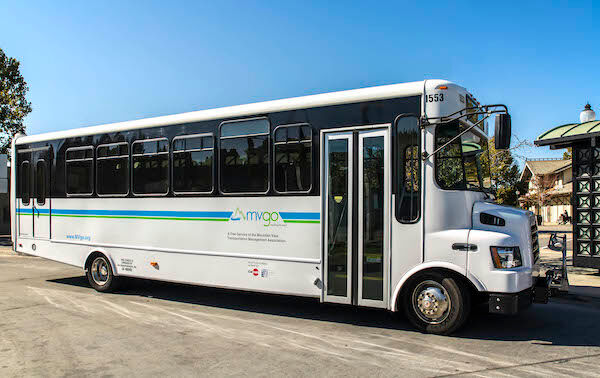
In the past, the local mass transit solutions focused their efforts on incentivizing white-collar workers and new workers to use public transit to get to the office. However, for many of these workers, the cost was never the issue — it was more a question of time and opted for the quickest way to get to work.
But since the changes in work routines and the adoption of hybrid working, the mass transit solutions have shifted their efforts to focus on the equity areas to serve those whose work depends on public transport. MVgo is mirroring these effects by seeking an audience that relies on a transport solution to connect them with their community.
Caltrain has been undergoing an electrification revamp that’s due to be completed next year. Once electrification is complete, the area should expect a faster, more reliable service and we can expect ridership to increase — ultimately increasing that of MVgo.
The MVgo program operates alongside another fare-free public shuttle service offered to the city’s residents called the Mountain View Community Shuttle.
Rather interestingly, where MVgo is trying to increase its ridership, the Community Shuttle program is operating at over 100% of its pre-pandemic ridership levels despite both services operating in the same area — then what’s the difference between the two?
One reason for the Community Shuttle’s success is that its riders are not only employees from larger businesses but people that rely solely on the system to get around the city. Moreover, it also provides midday services whereas MVgo runs during commuting hours.
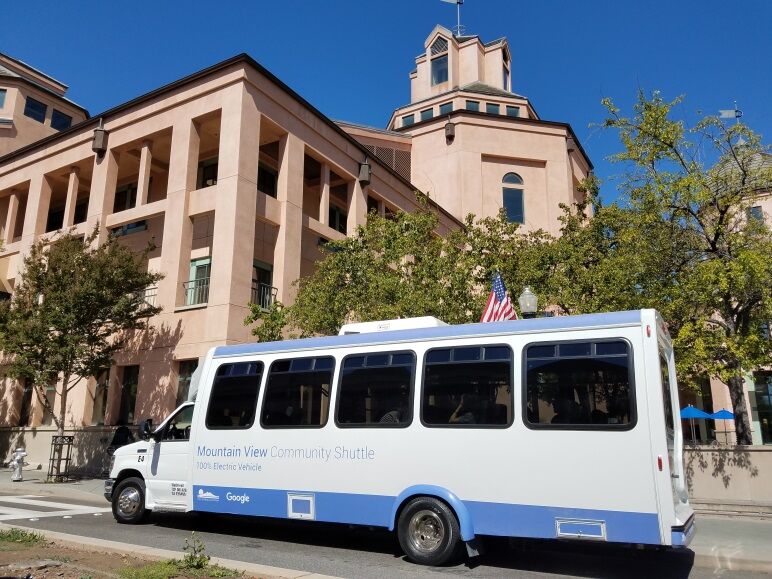
In MVgo’s case, extending the operating hours to provide midday services might seem a costly risk for the members of MTMA. On the other hand, perhaps the statistics of the Community Shuttle’s high ridership could reassure the organization to extend the service hours to the midday period.
The Community Shuttle has its own challenges to face. Very soon, Google’s funding expires and the City of Mountain View is determining the next steps on how to keep the funding going.
If the city wishes to fund the program fully, it’s immediately hit head-on with the question of how it can sustain such an investment. Alternatively, there could be another kind of partnership. A potential outcome could be that the MTMA takes over the program and the city contributes as a member.
However, this wouldn’t be so straightforward. The challenge lies in ensuring equity among the MTMA members who fund the services, as well as the designation of MTMA resources to provide a general community benefit, while also balancing the TDM needs of members to support their trip reduction requirement imposed by the City.
Numerous cities around the globe are experimenting with fare-free transit. Some cases have resulted in a significant increase in people switching from their cars to public transit, whereas in other places the concept has proven less successful.
Can these stories tell us anything as to whether we can expect a fare-free future in public transit or is this initiative merely an ephemeral attempt to temporarily get people out of their cars?
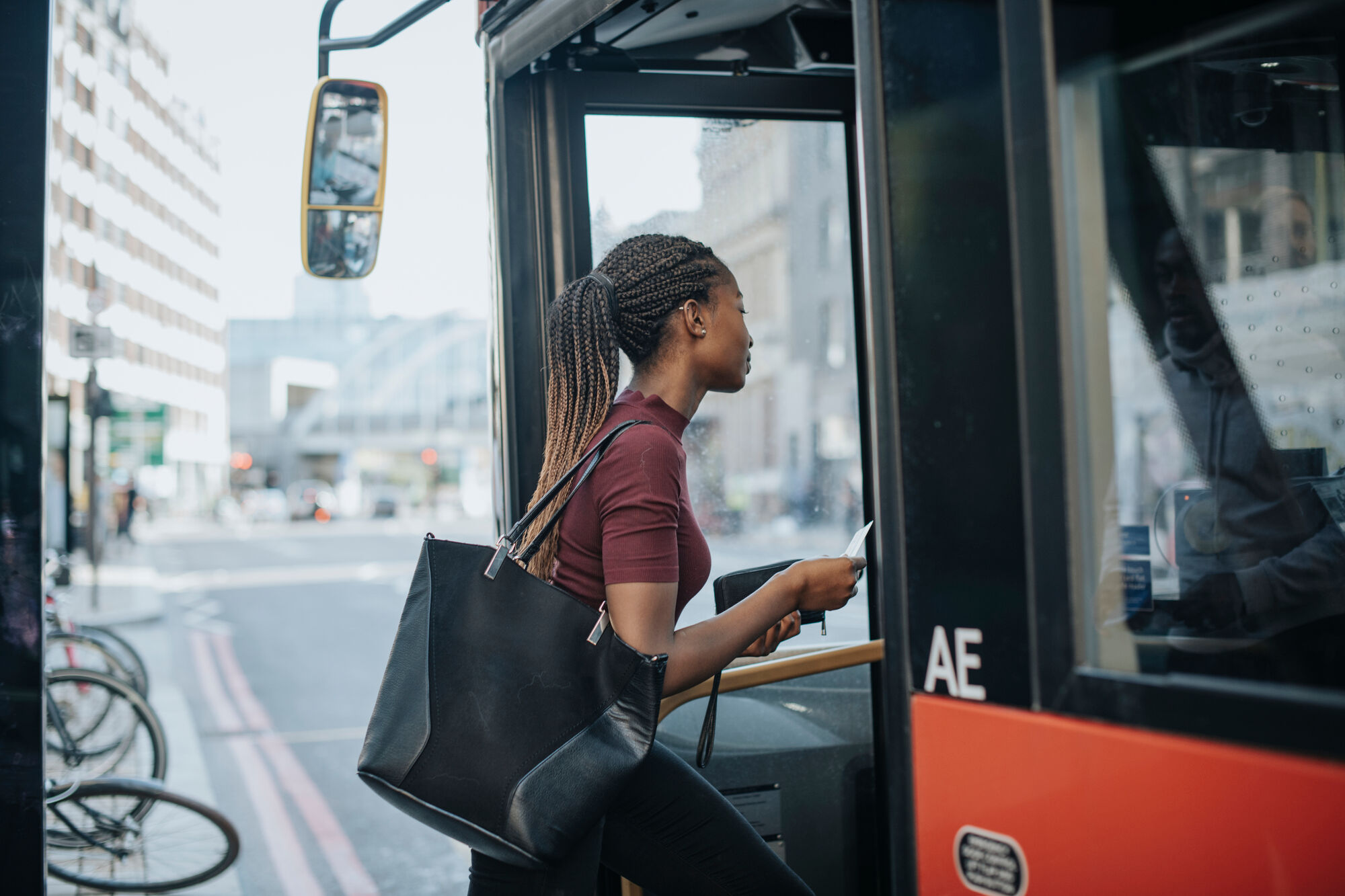
During the interview, Roni brought to our attention an interesting case that makes her believe that fare-free transit can be sustainable over a longer period of time. The reason amounts to the sustainability and reliability of mass transit.
“In terms of financial stability for transportation programs such as first/last mile shuttles, public-private partnerships, such as city-imposed conditions on new development, are key to ensuring sustainability of such programs to support continued growth throughout the Bay Area.
Emeryville provides a good example of this when they launched the Emery Go-Round in 1995, thirty years on this service is still going strong and is a vital service to the city; it’s the reason why people and larger employers come in and establish their bases there.”
While challenges undoubtedly exist, the sustainability and reliability of mass transit coupled with strategic funding agreements demonstrate that free public transport fares can be a viable and lasting solution for urban mobility.
Over the coming months, the MTMA will be focusing its attention to stay on top of the various changes in transportation options. As well as shuttle services, the organization will be watching closely how people are getting around in the constantly evolving mobility ecosystem.
In addition to trying to bridge the midday gap in the MVgo services, the organization is continuing its work to give a big promotional punch to the city to encourage people to adopt public transit.
Roni concluded the interview by stressing that the shift in travel behavior stretches far beyond a free ride. Rather, it is the equilibrium of factors that makes public transit more appealing, reliable, and efficient than using a private vehicle. A single, bad experience, such as a late arrival or canceled service, can put someone back in the mindset that the car is better.
Sengerio would like to thank Roni Hattrup for the interview, as well as Ben Pacho of the City of Mountain View, and wish the best of success to the MTMA and its members.

ABOUT SCOTT FRANKLAND
Scott Frankland is Head of Content at Sengerio. His spirit of inquiry leads him to the world of transportation and mobility to connect with the industry’s leading experts and shine a light on the hot topics.

ABOUT EDOARDO ZACCARIA
Edoardo is the Sengerio Customer Success Manager and a passionate climber. His interpersonal skills and ability to build strong relationships have been invaluable in helping customers successfully get the most out of the Sengerio platform.